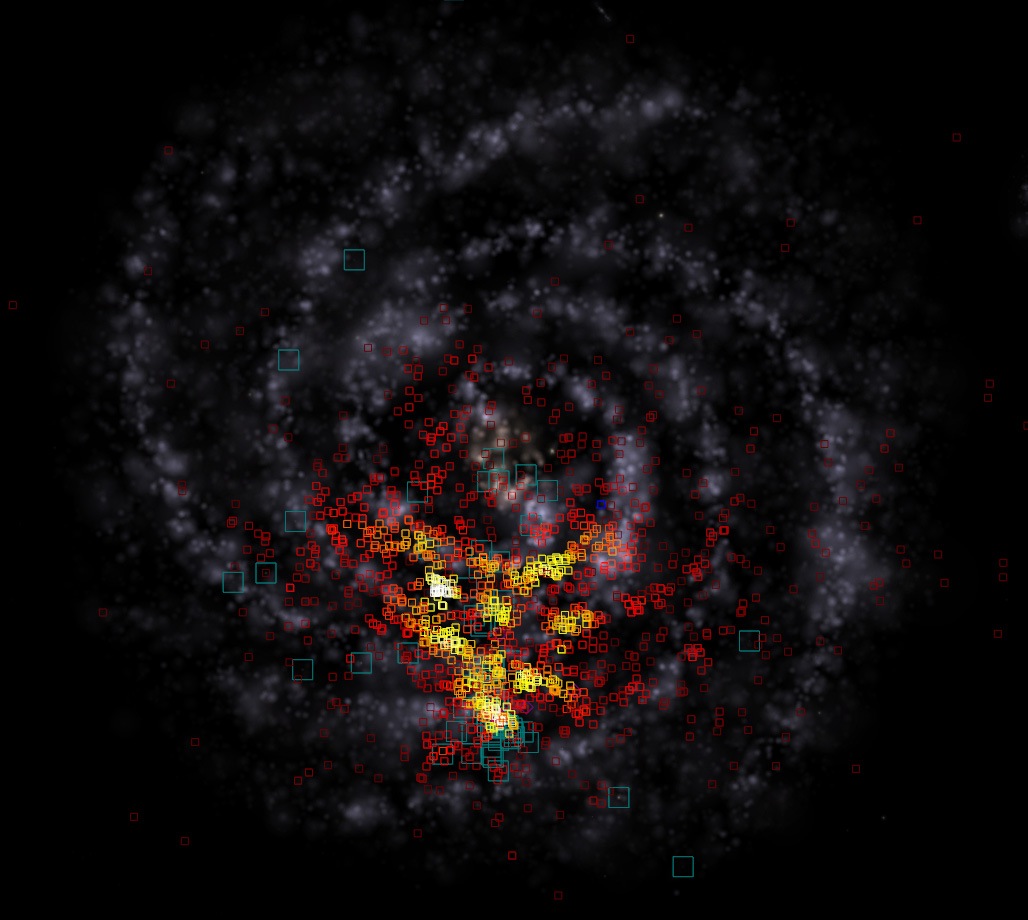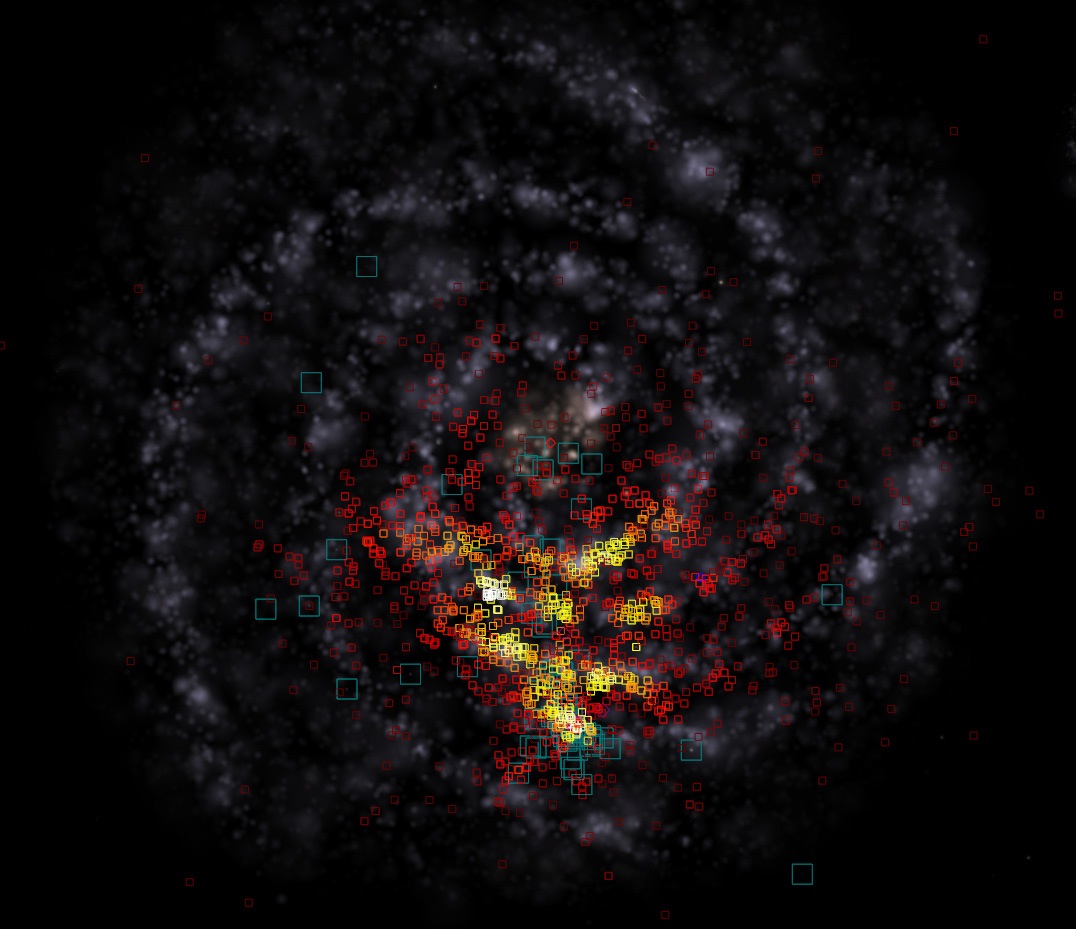The red-yellow squares on the picture below represents pulsars density. We can clearly see some parts of the galactic arms, and they look like reversed, compared to the MilkyWay template. Fridger ?




Cham wrote:Oh MY !
I simply reversed the MilkyWay.png template, and now the pulsars distribution match perfectly the template !! This is GREAT !
selden wrote:I probably should think about updating the Addon. Hopefully more pulsars are included in the database now than when I first created it.
If you look closely, you'll notice that there are very few pulsars shown in the Perseus arm outward from the position of the Sun. I suspect that's an observational effect due to very few searches having been done in the direction opposite from the galactic center.
selden wrote:Fridger,
If you think the catalog of pulsars is an appropriate
addition to Celestia, that'd be great!
The Addon includes CEL scripts that mark the pulsars
with different colors depending on various
characteristics. The picture Cham posted above shows
marks that have their colors determined from the local
density of pulsars: red = low density, yellow = medium,
white = max, with a linear scale between them. Other
scripts set colors determined by their periods and other
characteristics that I've long since forgotten. Would you
be able to include something like that?


ElChristou wrote:t00fri wrote:...These data
indicate that our Milkyway is about a factor of two larger
in size than what was commonly thought...
Yep, I'm still thinking we should update the size of the
MW to match those datas...
t00fri wrote:ElChristou wrote:t00fri wrote:...These data
indicate that our Milkyway is about a factor of two larger
in size than what was commonly thought...
Yep, I'm still thinking we should update the size of the
MW to match those datas...
ElChristou,
that's not all that simple:
Illustration:
almost every galaxy is about a factor of 2 bigger than it
looks like in a visual telescope. The reason is dark
matter that cannot be perceived visually.
In the same sense the present evidence for additional
MilkyWay arm structure via neutral hydrogen is visually
not apparent. So increasing the size correspondingly,
would violate our basic rule of the game that Celestia
pictures things essentially in visual light...
t00fri wrote:Of course my personal taste is way more general.
I would have long started to implement wavelength
"switches/filters". Then we could include those great
RGB colored infrared images of Titan, Saturn and many
other objects, for example.